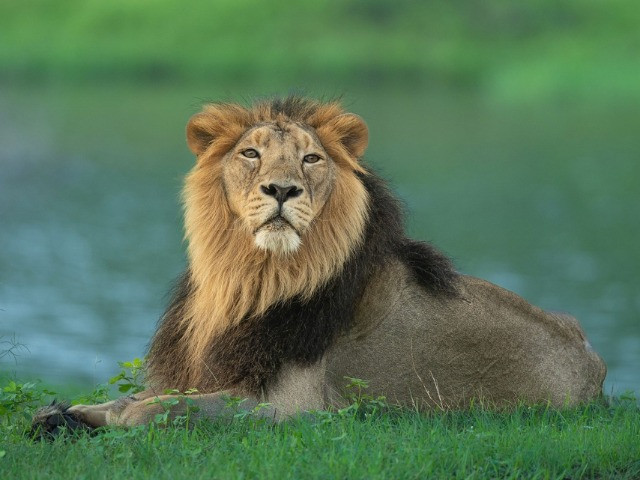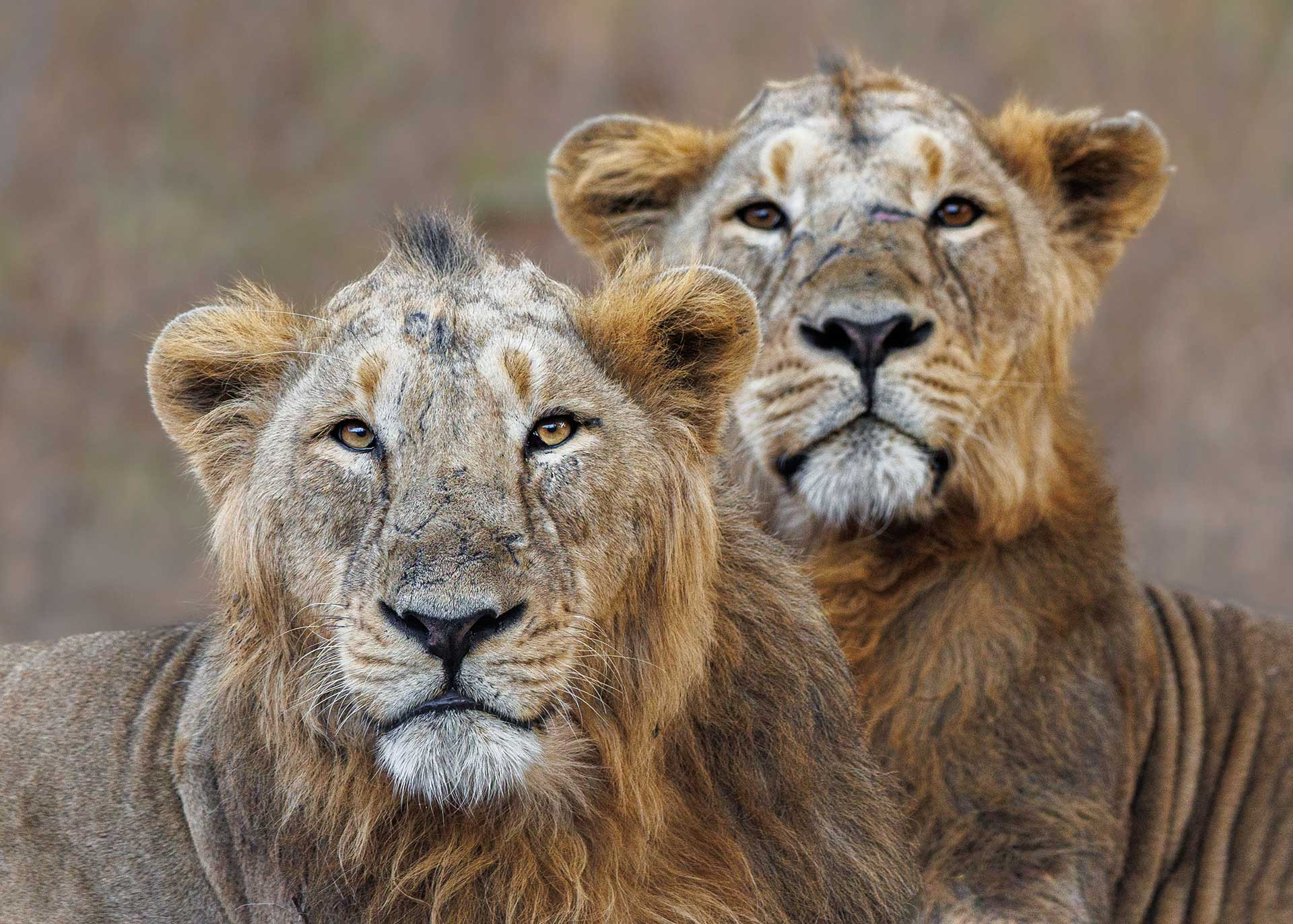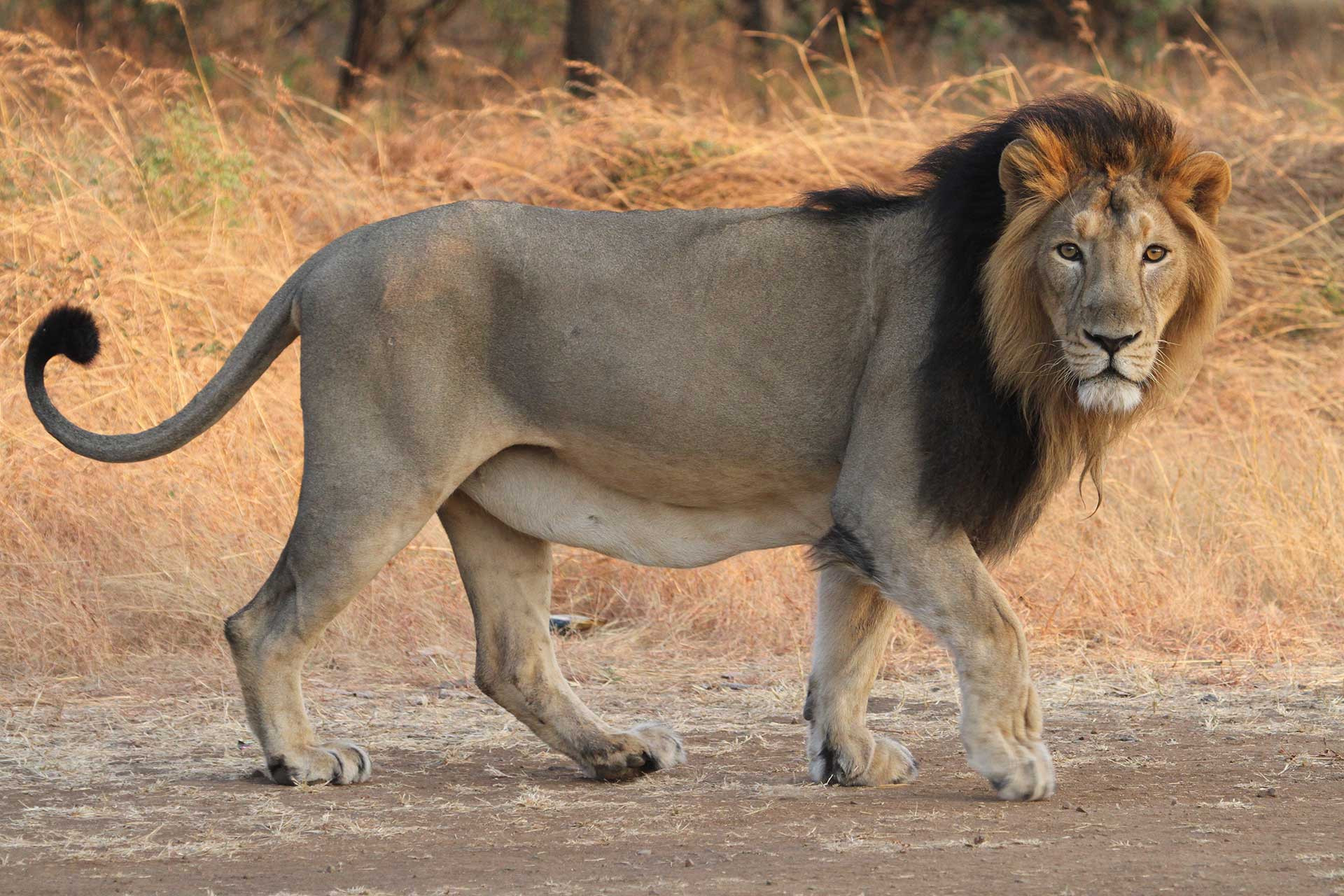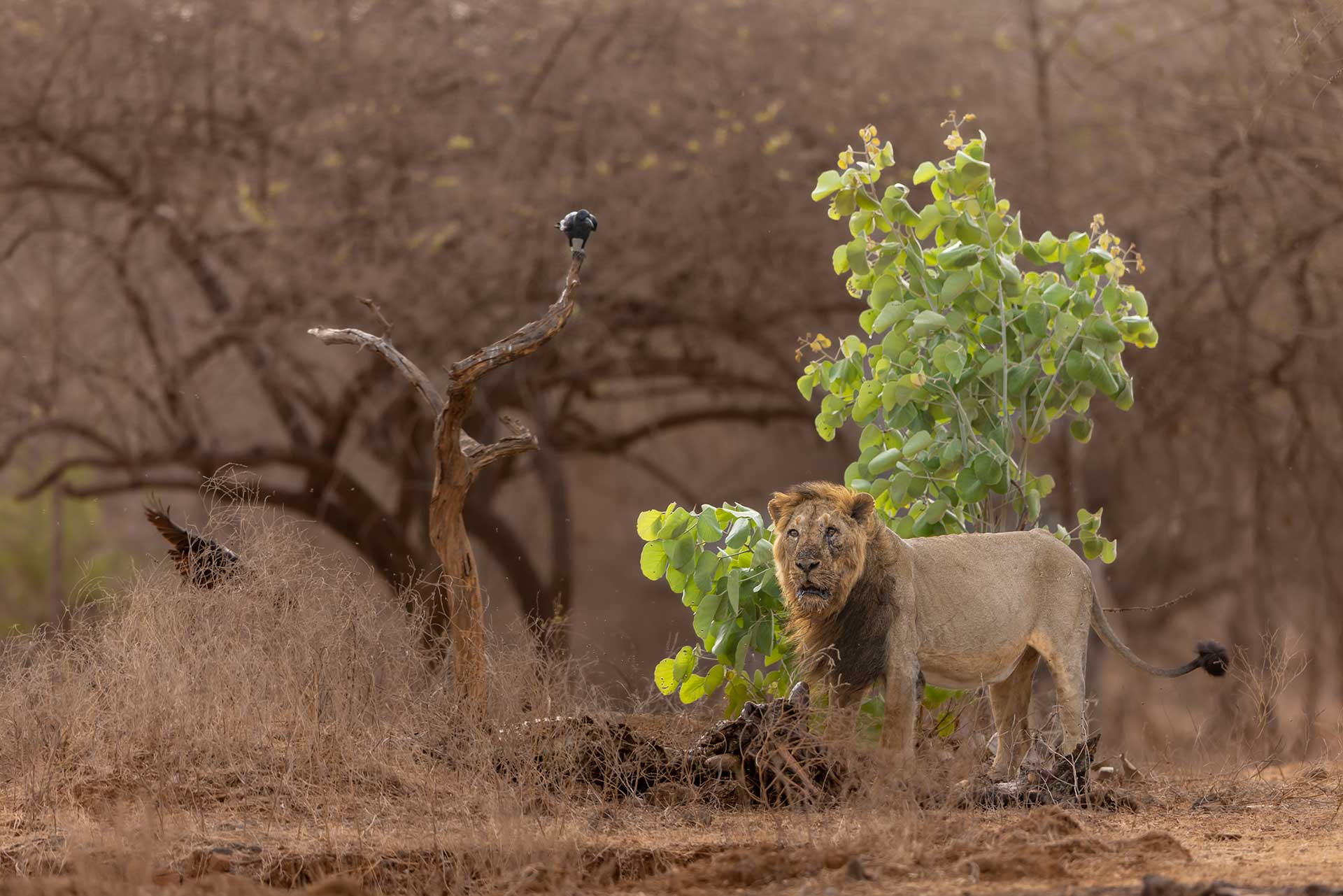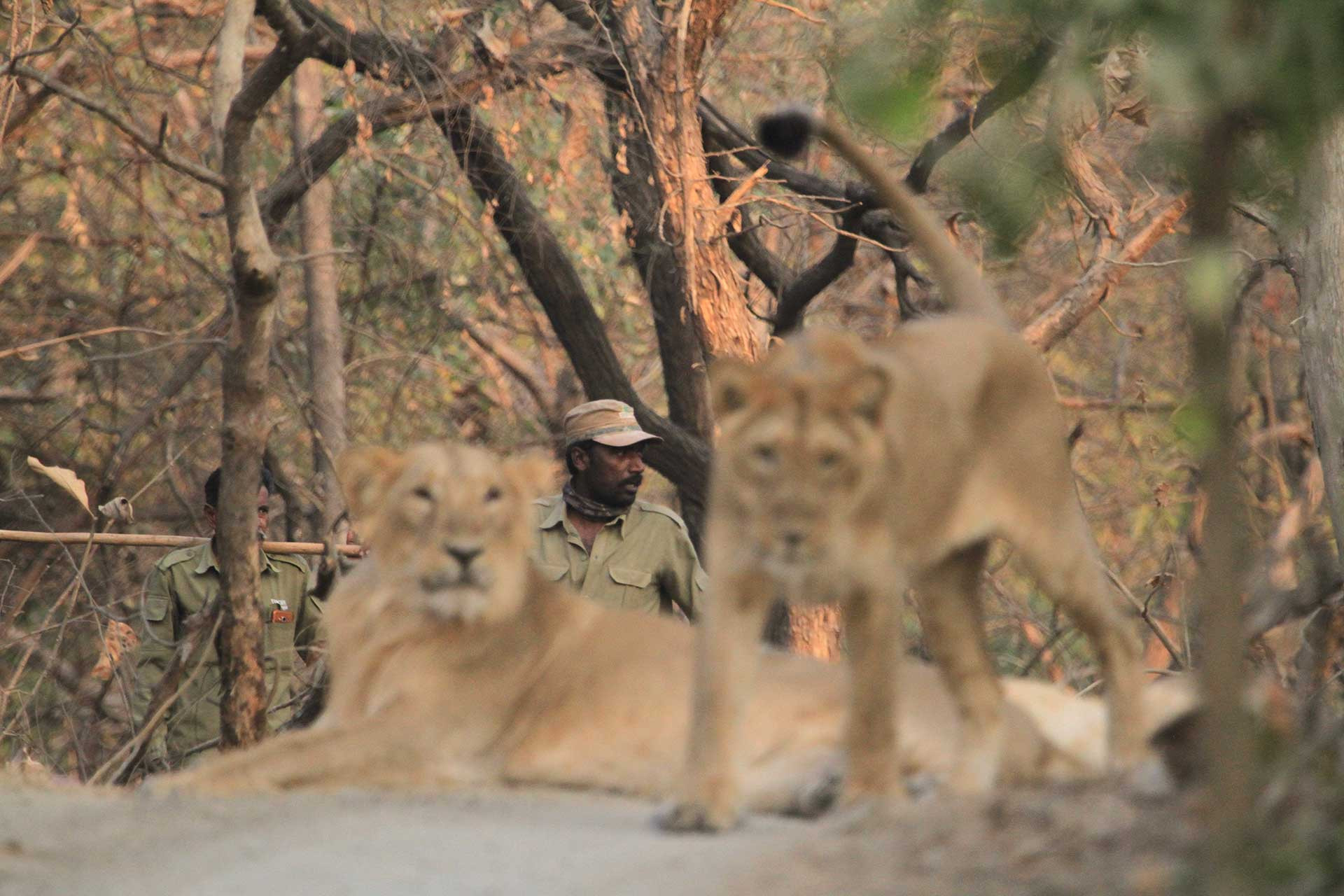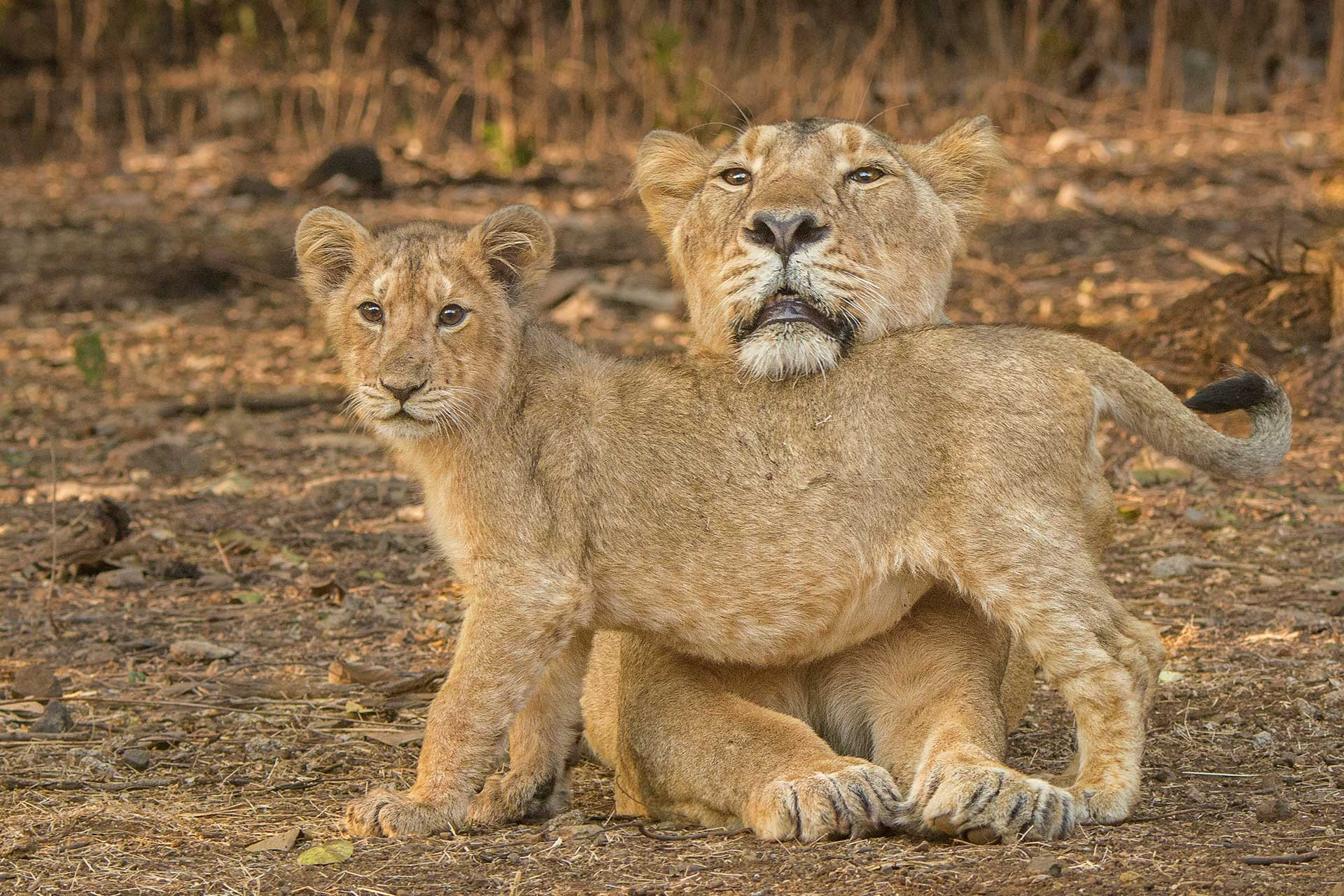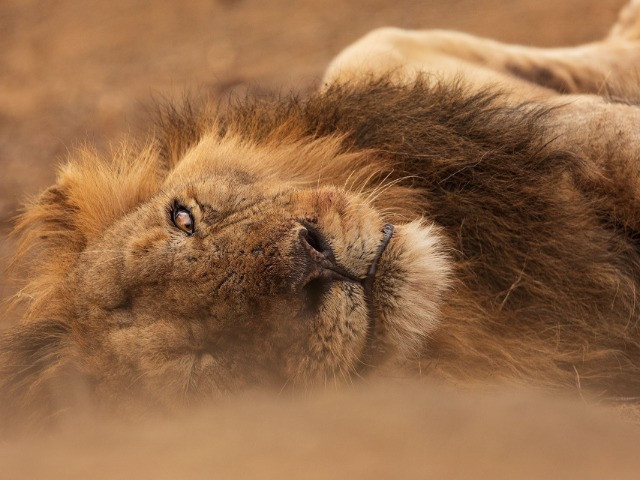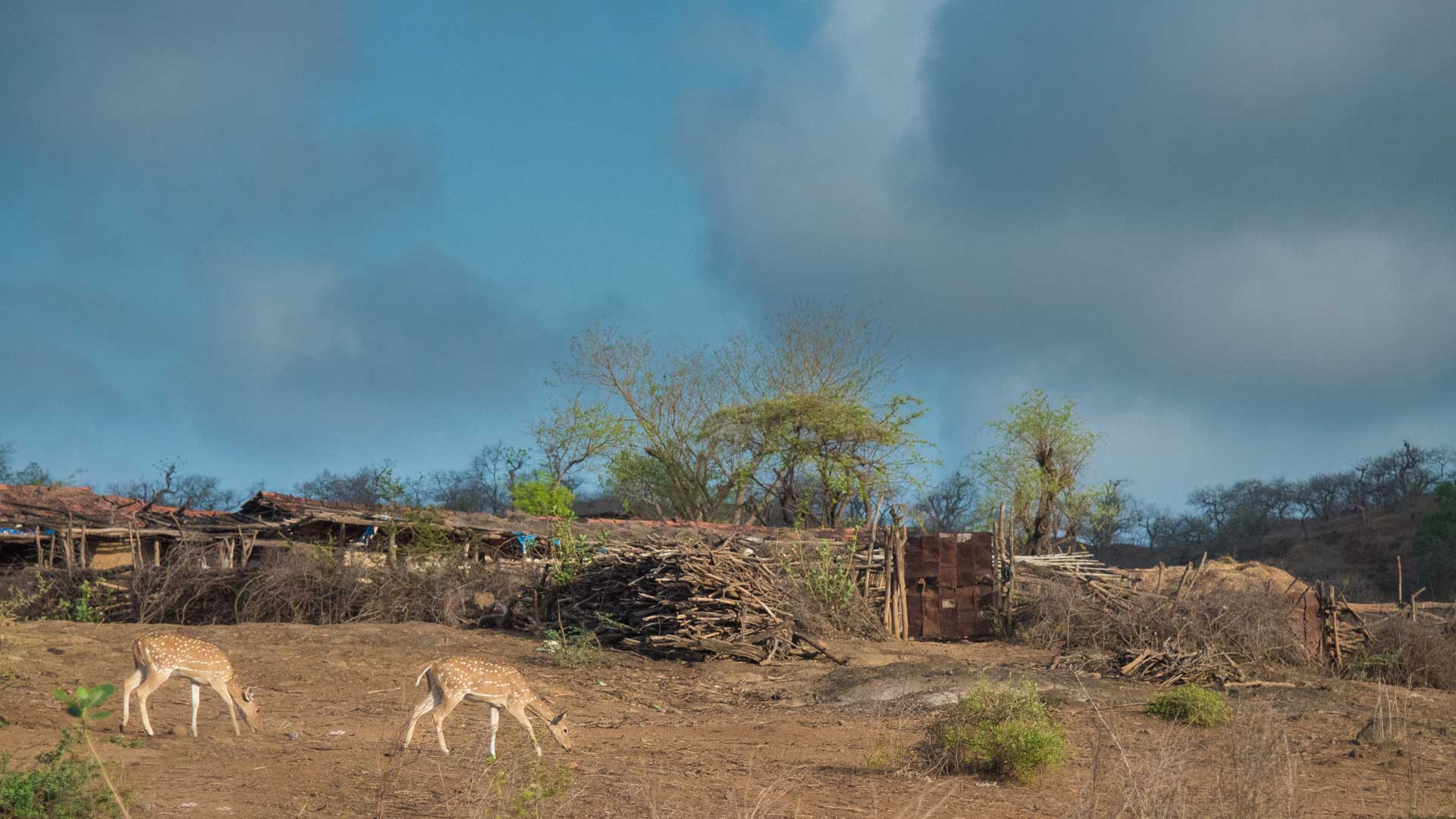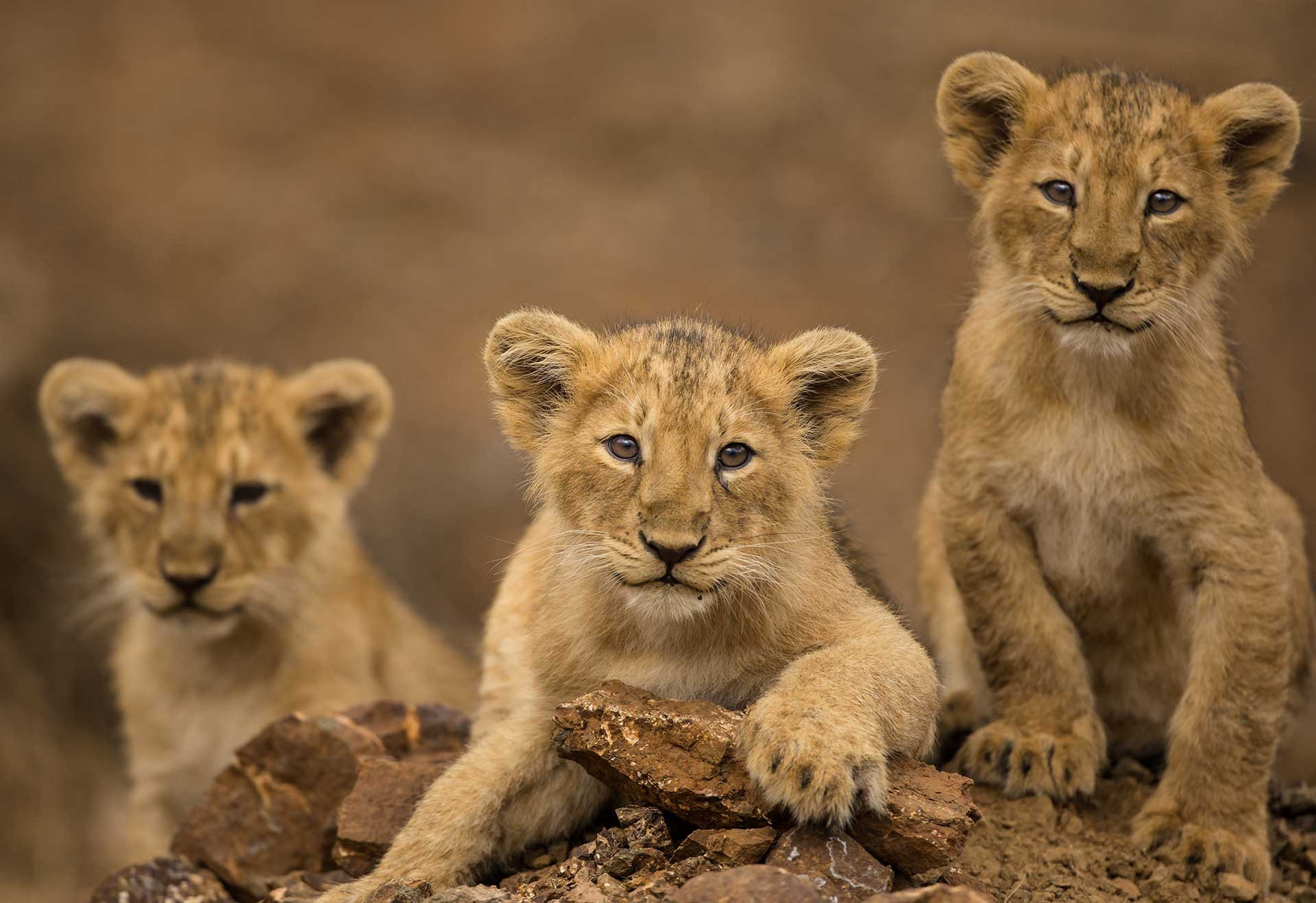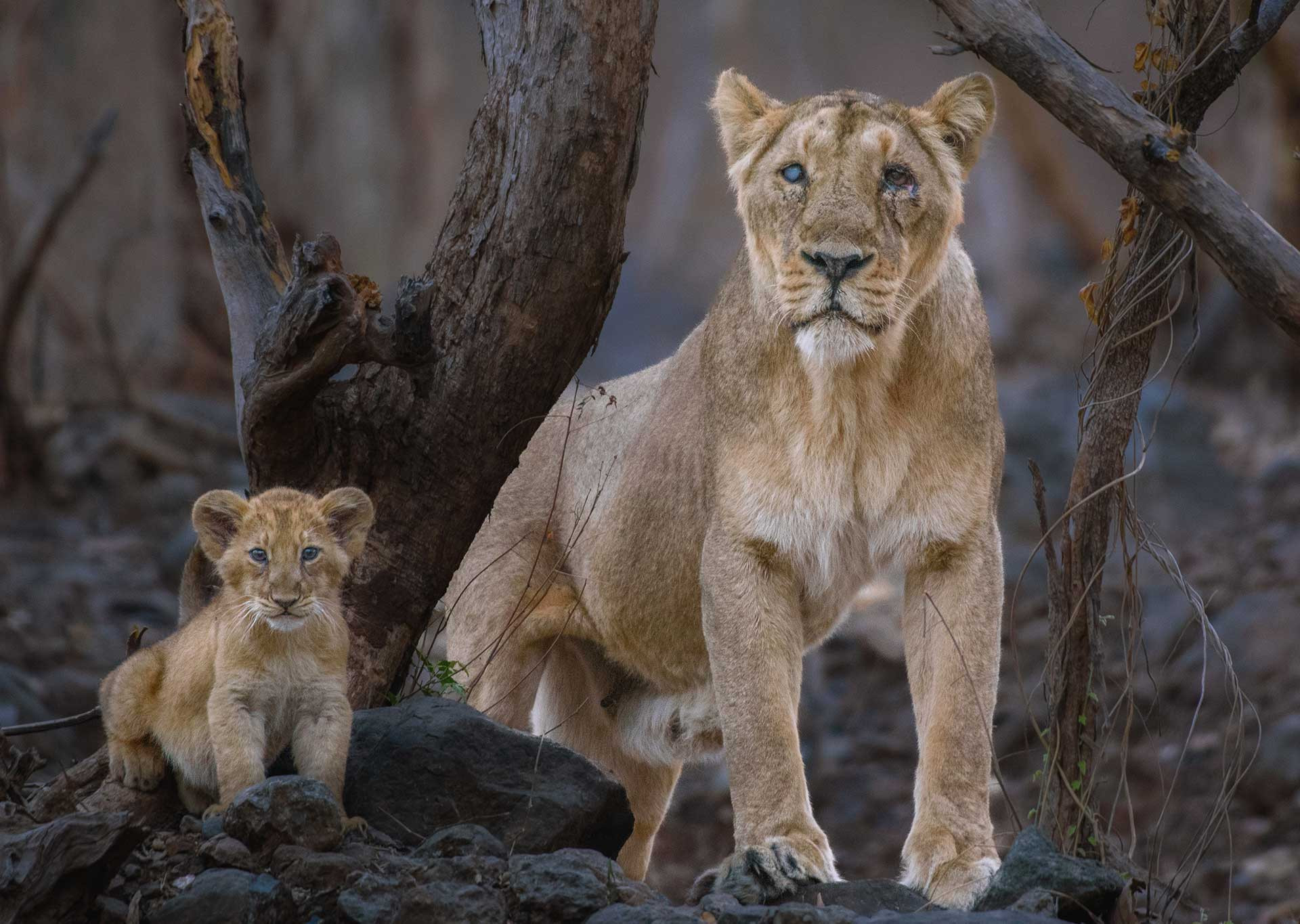On September 17, 2022, eight Southeast African Cheetahs were flown in from Namibia to Kuno National Park in Madhya Pradesh as part of the cheetah reintroduction programme by the Wildlife Institute of India (WII). While conservationists have contested the need for a rewilding effort that demands an exorbitant outlay with such slim chances of success, it is made all the more untenable by the plain truth that Kuno National Park was notified and earmarked for a certain other wild cat species—the Asiatic Lion.
Only found in the Gir forest and surrounding areas of the western state of Gujarat, the Asiatic Lion is an endangered big cat that has seen a remarkable recovery from the brink of extinction. From single digits in the early 1900s to a thriving population of 674, as per the latest survey, the lions of Gir are a true outlier in megafauna conservation. However, a singular population poses huge risks that can undo the incredible work done by the government and the people of Gujarat. It has been well over nine years since the Forest Bench of the Supreme Court of India ordered the translocation of lions from Gir to Kuno in Madhya Pradesh to establish a geographically separate, secondary population. Sadly, the Gujarat government is yet to comply with the order, and now the fastest terrestrial animal on the planet has seemingly claimed Kuno for itself.
Find out what is next for this majestic feline, look back at its conservation history, understand the natural history and the numerous threats they face, and more. Here is your complete guide to the Asiatic Lion. Come, join the pride!
1—Asiatic Lion Vs African Lion
Previously, the Asiatic Lion was considered different from its African counterparts and had the scientific name Panthera leo persica. Genetic studies have since established that the lions of Central and Western Africa and the Asiatic Lion belong to the same subspecies, Panthera leo leo. The Eastern and Southern African lion populations make up the other recognised lion subspecies, Panthera leo melanochaita. The discernible difference between Asiatic Lions and their African cousins is the shorter and sparser mane in male lions. Asiatic Lions also have a longitudinal fold of skin running along the abdomen, rarely seen in African lions. Adult male Asiatic Lions weigh 160 to 190kg, while females weigh 110 to 120kg. The height of an Asiatic Lion at the shoulders is about 110cm.
2—Pride of Gir
While lion populations are found across the African continent in varying habitats, the last surviving population of free-ranging Asiatic Lions is restricted to the Gir forest and surrounding areas of the western Indian state of Gujarat. A species that once ranged from Persia to eastern India—the last Asiatic Lions outside India were believed to have been shot and killed in Iran in the 1940s. The dry deciduous forests of Gir are also home to a dense population of Indian Leopards and a rich assemblage of prey—Chital, Sambar, Chousingha and Chinkara. With more than 300 avian species recorded in the region, the legendary ornithologist Dr Salim Ali believed Gir would have been known as the foremost bird sanctuary in the country if not for the Asiatic Lion.
3—Back from the Brink
Akin to carnivores elsewhere in the world, the Asiatic Lion faces a high risk of extinction. In fact, according to estimates from the early 1900s, the Asiatic Lion population in Gir had fallen well below 50 individuals. Dedicated conservation efforts led to a remarkable recovery, with the latest census count of the Asiatic Lion at 674 individuals. The creation of several Protected Areas (PAs) and the resettlement of pastoral communities and their livestock outside protected lion habitats saw an impressive growth in prey base numbers, which coincided with the recovery in lion numbers. The protection of dispersed lions in their satellite habitats and maintenance of corridors has allowed for the continued growth of this endangered cat. The conservation success story of the Asiatic Lions of Gir stands as an outlier in the otherwise appalling extinction crisis of the world’s megafauna.
4—Prides and Coalitions
Lions are the only cat species in the wild which live in stable social units. Lion society consists of three social units: a pride of related lionesses and cubs, a coalition of male lions, and nomadic lions that are not part of any group. The lionesses band together to defend resources such as prey, water and refuge for raising their cubs. Prides are joined for defined periods by coalitions, during which the males of a coalition sire all cubs of a pride. The makeup of a coalition is predicated by a delicate balance wherein the partnership is strong enough to take over and maintain a pride territory but not at the cost of mating opportunities.
"To take over, to establish control over their prides and have a prolonged stay in the same range is the challenge that all male lions face during their lifetime. The cycle is completed when after a few years of association with prides, they are in turn, evicted by other coalitions. Males end up as nomads at the fag-end of their lives," writes Meena Venkataraman, a wildlife biologist researching the Asiatic Lion for over 15 years, in her story Who is King?
5—For the Lions of Tomorrow
The reproductive cycles of lionesses are irregular. But when ready to mate, an oestrous female is usually fertile for three or four days, during which she will mate with one or more of the male lions in the pride. The male is aggressively protective of the female during this period. Successful fertilisation requires a large number of matings, and copulation can occur as often as once every half hour and about 50 times a day. If the female is left unattended by a courting male, other males from the pride take over the mating. The gestation period for lions is about 108 days, after which the female gives birth to about two to four cubs. Cubs are born with spots that disappear as they grow older. Mother lions keep their cubs hidden for about six weeks and only introduce them to the pride once the cubs are capable of following the group around. All the females in a pride help in raising the cubs and teach them hunting skills.
6—Prey, and Then There is Easier Prey
During the last five decades, the number of lions in Gir has increased fourfold, an outcome which can be primarily attributed to the conservation efforts that resulted in the recovery of the region's native vegetation and a thirteenfold increase of the prey base population (wild ungulates). Based on scat analysis from a 2011 report, the relative number of prey species consumed by the Asiatic Lion has Chital at the very top, followed by Sambar, wild boar, langur and Nilgai. The feeding patterns of the Asiatic Lion over the years, when plotted on a graph, tell a tale of enormous fluctuation. While in the past, livestock made up 75 per cent of the Asiatic Lion diet, by the late 90s, it had reduced to just 25 per cent. In recent years, with lions dispersing outside the park, livestock depredation has once again been on the rise.
7—Everything the Light Touches
Once the lion population within the Gir forest reached saturation, sub-adult and nomad lions started dispersing in search of food and space. Strengthening conservation measures and habitat recovery saw the lions move into satellite areas of Girnar, Mitiyala, Babaravidi, coastal areas, Amardi, Liliya–Krankach, Jesor, Shatrunjay Hills and Hippavadli areas. Though difficult to accurately estimate the distribution range of the lion, based on livestock kill data and the frequent movement of the animal, it is projected at about 12,500-13,000sq.km., spread across 1,475 villages in four districts—Junagadh, Gir-Somnath, Amreli and Bhavnagar. In 2015, the Liliya–Krankach area, which is not a forest or a PA, supported the highest concentration of lions in the world (about 50 lions, including floating lions, in about 60sq.km.).
8—People of the Pride
The expanding range of the Asiatic Lion has meant that more than 50 per cent of the country’s lion population now resides outside PAs, regularly frequenting human-dominated spaces such as cities and villages. Research shows that lions outside PAs demonstrate a learnt behaviour whereby they navigate marketplaces at night, find carcasses at cow shelters, avoid humans, and more. While living with a large carnivore that requires 8-10kg of meat per day for survival is no joke, surprisingly, the people of Gujarat coexist peacefully with these big cats (at least presently). This is possible only due to the love and pride of the Gujarati people for the Asiatic Lion that springs from providing sanctuary to the last free-ranging population of this majestic feline. Of course, the efficient and up-to-date livestock depredation compensation scheme run by the Gujarat Forest Department (a practice initiated by the Nawab of Junagadh) helps with the tolerance pastoral farmers have for the big cat.
9—Epidemic Could Spell Extinction
In the last decade, an average of 100 lion deaths a year have been reported several times in the country. While 60 per cent of the deaths are due to natural causes, quite a few are from diseases like the Canine Distemper Virus (CDV) and Babesiosis. Between 2018-19, an outbreak of Babesiosis and CDV resulted in the death of more than 60 lions. Such epidemics at a larger magnitude could potentially put the Asiatic Lion at a high risk of extinction, like the 1994 outbreak of CDV in the Serengeti region of Tanzania, which is estimated to have wiped out 33 per cent of the local lion population. The reality of lions regularly sharing space with feral dogs and cats outside PAs makes such an occurrence even more plausible.
10—A Second Home?
Disease outbreaks, flooding, forest fires, and habitat degradation are some of the things that can spell the end for the Asiatic Lion. The best way to minimise these risks is to translocate and establish a geographically separate, free-ranging population. As early as 1995, Kuno National Park in Madhya Pradesh's northern district of Sheopur had been identified as a secondary home for the Asiatic Lion. Between 1996 and 2001, 24 villages were relocated outside the protected area, and Kuno was notified as a national park.
Yet, decades later, the Asiatic Lion is still to be translocated, with the Gujarat government stalling on the basis of untenable excuses. The arrival of the cheetah in Kuno only complicates matters even further. We cannot continue to tempt fate by confining the Asiatic Lion to a single location. It could result in the extinction of these free-ranging wild lions, which have such strong cultural links to people across India.
